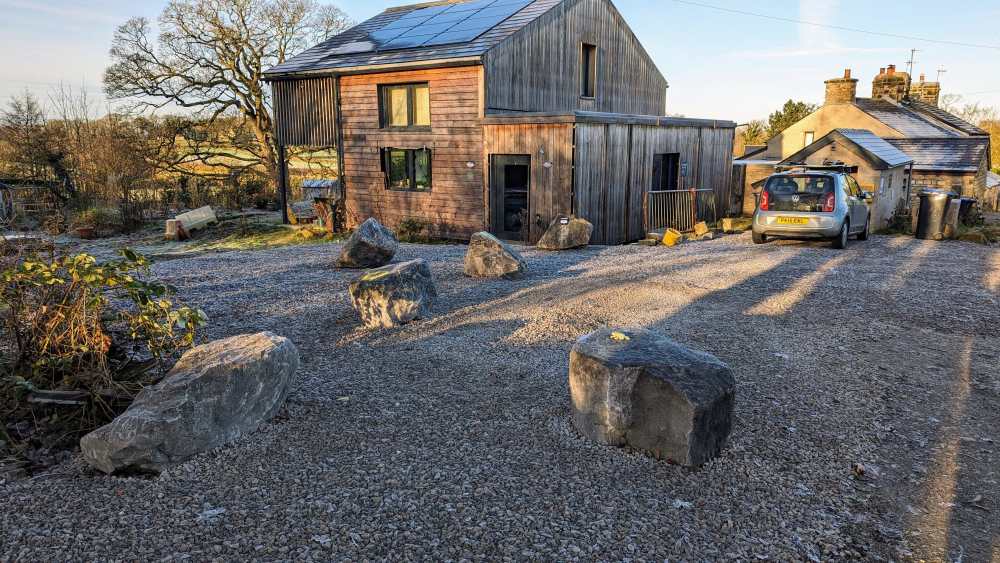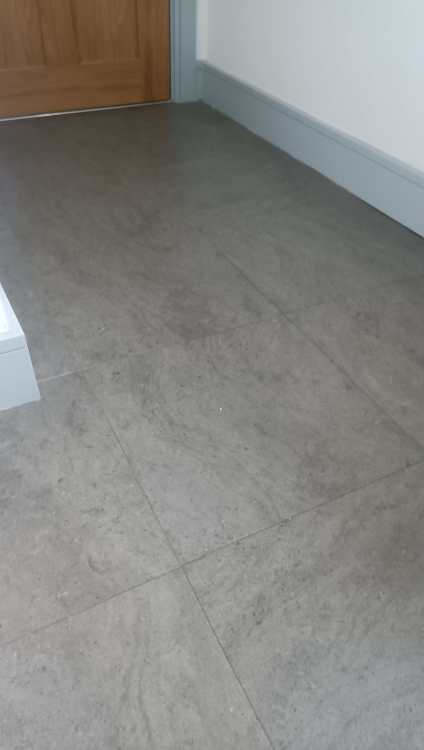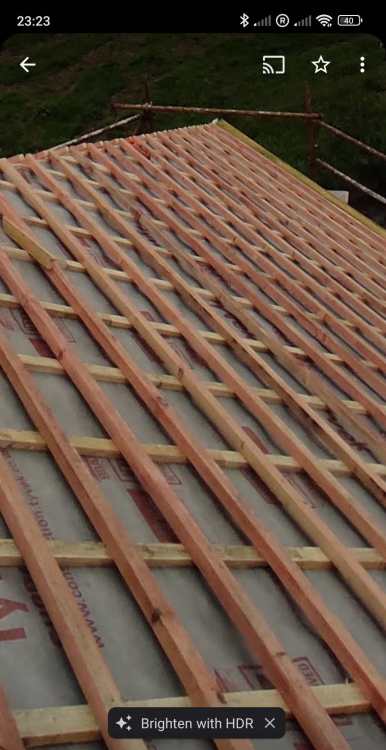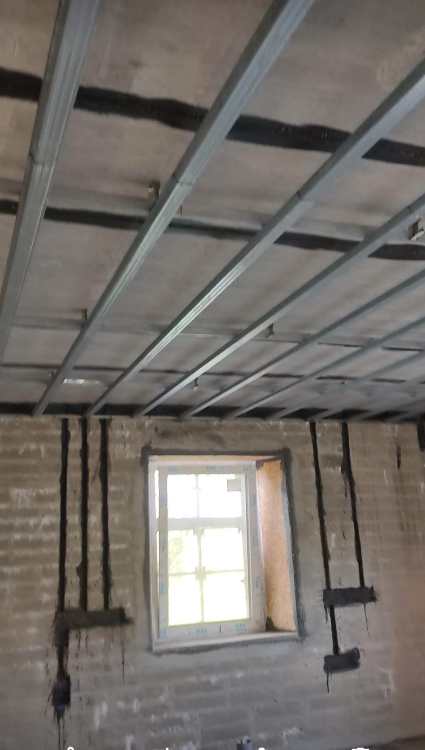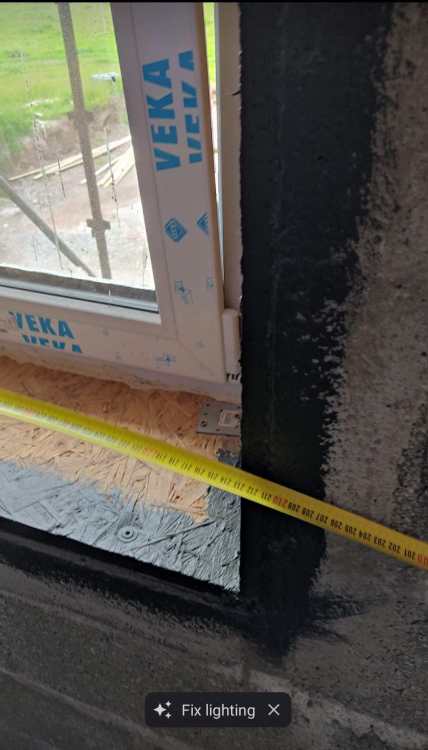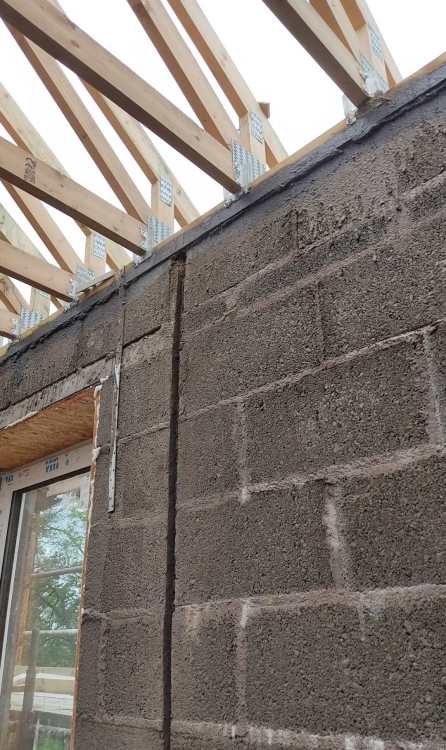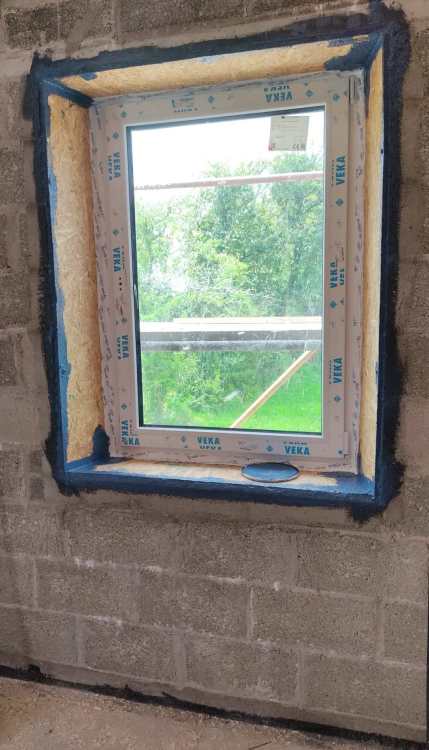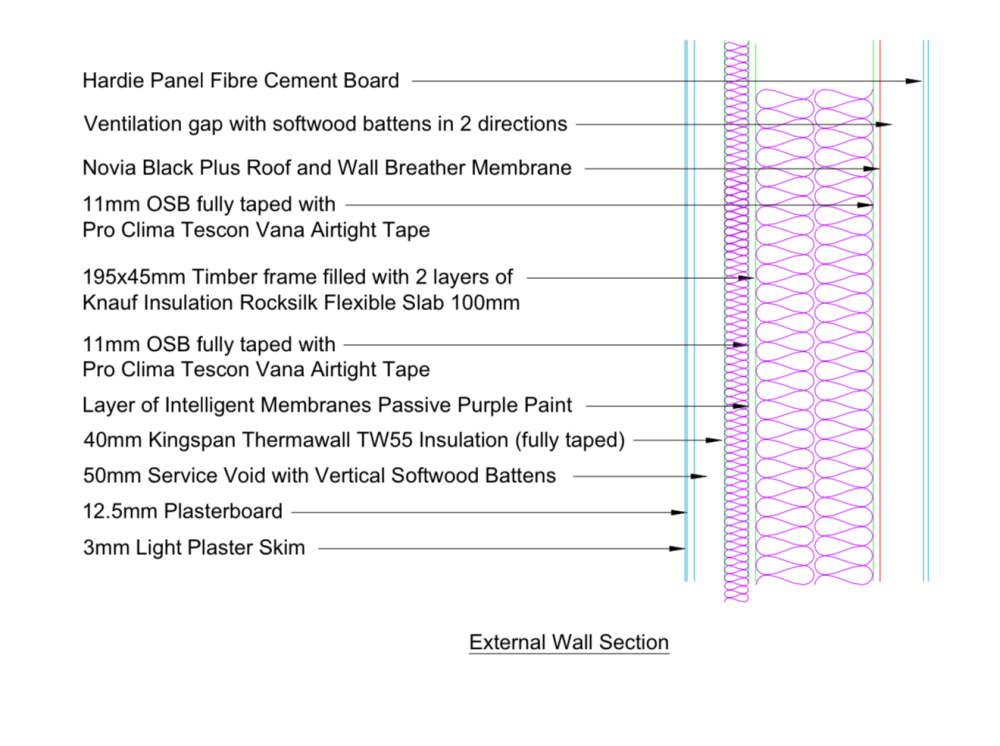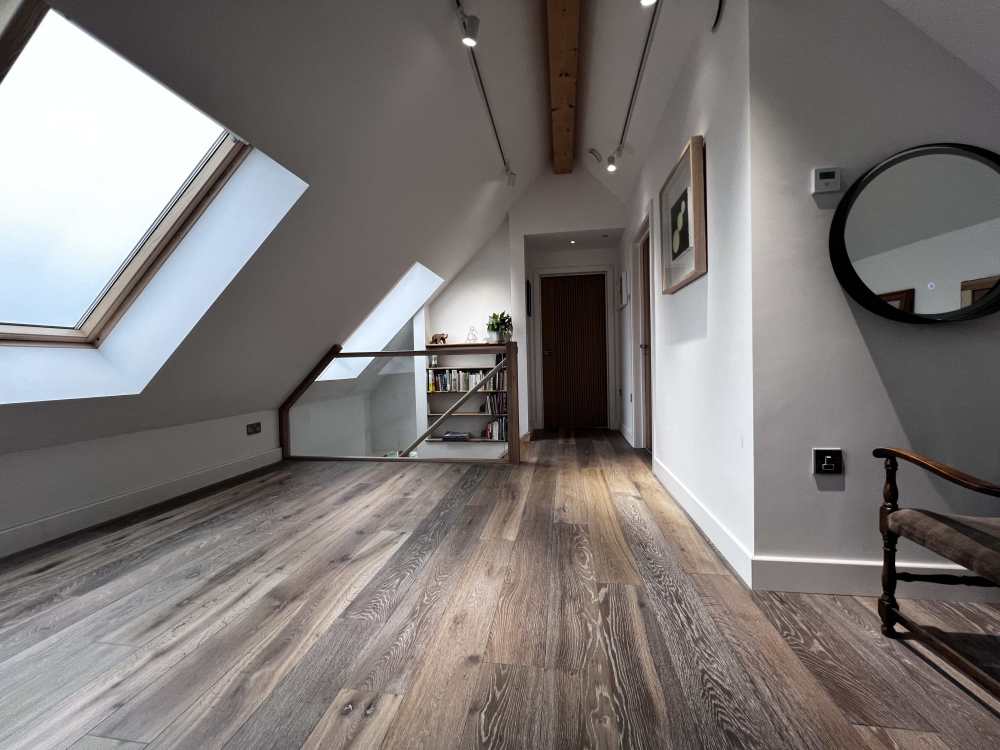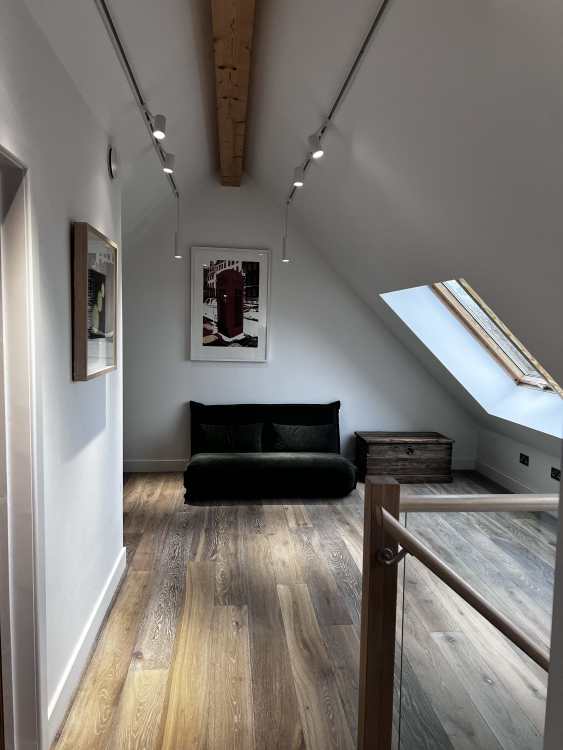Leaderboard
Popular Content
Showing content with the highest reputation on 11/10/24 in all areas
-
Over thinking buy them, install them, onto the next problem we had loads of solar panels put up, the day they went up I hated them, worst thing I had done to the house, now I don’t even notice they are there.2 points
-
I didn’t, just registered as self employed with HMRC and kept records, if I got anyone else involved with a job, painter, electrician etc I made it plain that they were self employed working for the customer not me to keep things simple and no employee liability.2 points
-
Being self employed is a gamble but I thoroughly enjoyed it, I have always got on well with people, I have only not got on well with (some) management. Just make sure you are honest with customers, be comprehensive with quotes, no ambiguity. That’s really to do with the likes of gas, electricity and structural engineer. Anyone can call themselves a builder (I did with no qualifications) just a lifetime of DIY and the right aptitude.2 points
-
I’ve been shop fitting myself but working for other people as subcontractor never run my own business same for my brother. He’s always worked for a big firm but now they’re laying people off and they’re scaling their business right down2 points
-
I’m really liking the notion that the EV that we probably will have one day, could run the essentials in the house for at least a day in the event of a power cut. I think that’s really good resource use. In lieu of an assault rifle will a mildly belligerent and highly sarcastic attitude do?2 points
-
I once had the great pleasure of a spot check from hse, and an hour walking round the site with him. The scaffolding was extensive but he didn't ask for papers or tags, just took a commonsense overview. Then up at a complex bit of roof we discussed what risks there were, and maybe moving a couple of poles. Thats the norm unless there is an accident or complaint. So, as you suggest, perhaps have a close look weekly, with some photos. The main risk is likely an unofficial adjustment by a non-scaffolder.2 points
-
Camping stove and gas bottle. Totally silent, and the fuel won't go stale (though it may run out)2 points
-
Make a DIY airtighess fan. You can troubleshoot at your leisure then as doing it on the day with the man with the fan won't give you enough time. I found loads of pinhole leaks on ours that were quickly solved with a dab of sealant.2 points
-
2 points
-
You are testing that none of the cores of the cable are shorted to another of the cores of the same cable, which is typically what will happen if there is a screw through a cable. So start with one probe on bare earth wire of the cable and one probe on the brown, if you get good, high insulation repeat with one probe on the earth and one on the blue. To be thorough test again with one probe on the brown and one on the blue. Typically a light cable in the ceiling will go to the light switch box, as most houses now are wired "loop at switch" not directly to the consumer unit.2 points
-
Wow. Purple paint isn’t like by this forum. Sorry I mentioned it. House finished time to leave the forum.2 points
-
We agonised for ages over the same dilemma. Then I realised that after I sprayed water on the various shades of different slate samples they all looked exactly the same. ended up going for the cheapest option we had. I’m sure I wrote a blog and a few posts about our slate journey. A quick search will find them but I came to the same conclusion as the others above.1 point
-
Just pick one, you won’t notice the difference (I used Spanish slate and turned out good stuff) crack on to the next decision 👍1 point
-
Don’t do rigid if it’s a branch system. Was a right pain in our last build. Next build we will use a radial semi system.1 point
-
There are many benefits to a sloping site. Not least to assist in our SUDs program. The slope towards that sycamore tree in the background hides a pond. That takes every drop of rainwater from our roof. The slope hides all sorts of small horrors (to be dealt with in due course) and provides privacy and shelter for many. (PS @JohnMo, that's a wonderful build and site)1 point
-
We sculpted out a hill quite a bit more extreme than yours. So anything is possible. Formed out a platform for the house to sit on, moving many thousands of tonnes, but took nothing away from site Retaining walls were done with gabions near the house, and wooden strainers elsewhere (8" wooden posts) A before and after1 point
-
You won’t guess the timber if I gave you 20 guesses we wanted red cedar to match the rest of the house, this would have been about £100 a metre, had a look at a local sawmill who had loads on display, I chose this on its weight and price. You can’t be fixing oak up there the weight would just be silly. this is poplar, that has been heat treated to preserve it, weighs absolutely nothing. Came in at half the price of cedar. secret fixed with stainless nails in the groove so you can’t see it. it has a trim to still go on around the edges.1 point
-
Timber I-beam portal frame using 15mm OSB3, 350mm Icynene with plasterboard and skim. No tapes or membranes at all. Airtightness was 0.47ACH.1 point
-
I had to check you weren't quoting me here. It was the big employer's safety officer. 1. has to be fibreglass, 2. need a mewp to tie it at the top. The latter later appeared to have happened miraculously. Must have been a passing mewp. These people gave h and s a bad name. Are they all in the bottoms of foundations? I think our one ( it was a big company you have heard of) expected a tenner to turn away, but I've never ever done that...scum.1 point
-
HMRC run various free courses as you need to suss out the tax side and decide if you want to be sole traders/partnership or Ltd Co, there are pros and cons with each. Explore insurance, a broker might help. Word of mouth advertising is good and might be all you need if you do well, although many people expect a web presence, something like wiz is cheap. Be honest, and stay within your abilities and you should be fine. I wish you all the best.1 point
-
You will need an accountant to talk you through the business side. you will need public liability insurance, talk to a broker, tell them what you intend doing, you might need professional indemnity insurance.1 point
-
I think that’s rather a harsh generalisation. I’ve mixed it with three roofers over the years who have been excellent and determined to do a good job. The others I’ve interacted with have been ok but not really pushing the extra mile, but my experience is still overall, very positive.1 point
-
That's a tiny hole. Literally cup full of sand and cement will have it filled. There'll be about 4 table spoons of moisture in there1 point
-
Window bolted to the external leaf and resting on the concrete window sill. The windows is set behind the external leaf. OSB is to close the cavity, and provide Airtightness. It's a completely independent box to the window. Just joined by AT tape. It's foamed and AT painted to the inner leaf and the cavity is completely filled with EPS blown beads. I would alter the method I use the next time by screwing J beads to the windows. Do you have any pics of the openings as they are today?1 point
-
Not an actual wet room, just the bathroom floor. I'll have to go to the shed to find the adhesive. It was some magic stuff from Poland from memory. I used tanking paint over the floor first and then SLC over that . I second the need to have the floor immaculate though. I left a grain of dirt under one of the tiles and you can feel it with your toes. On a separate note take a day off. Get ugly with everyone about the moving date and push it back. I gave myself the world of stress with this, baby enroute etc. Absolutely not worth it. It's only a house.1 point
-
Should all be sorted now. Mechanical protection added to front and sides of the brown and blue tail. Terminal screw points blocked off with removable plugs. Solution keeps plenty of cooling effect around the relay. Cupboard used as an MVHR through space to plant/storage room above which has an MVHR extract1 point
-
My logic is this. The timber is for aesthetics purposes only, and is a luxury that will have costs. The ceiling above it should be constructed to provide whatever performance for fire, sound and heat loss is required. Plasterboard finish if internal, but it doesn't need jointing so is cheap. You may want a black paint on the pb for shadow gaps. It may not be a requirement but I think an intumescent varnish may be prudent, for spread of flame, not as a barrier. If there is no likely source of a fire and it is not above a fire escape route, then don't worry about it, but a cooker beneath would preheat the wood then a fat fire could light it. Timber on walls and ceilings can burn very fast.1 point
-
That's... quite an overreaction. Airtightness paint is useful. It's available from at least 3 manufacturers. Pick the one you want, everyone has their opinion.1 point
-
I’m not sure that the cladding in itself would have any impact upon regulation compliance. The omission of plasterboard may be possible but the would be dependent on a number of factor such as whether the ceiling formed part of a fire compartment and/or part of the air tightness detailing. For example consider the following assumption - the vaulted ceiling has nothing but a roof above (which does not form part of an exit strategy for the floor above), it is a new build and it is assumed there will be a vcl lining to roof structure. In this case you COULD omit the plasterboard and timber line directly. However, it should always be considered that a good roofs function is not always only to keep the rain out but also limit the external environmental noise out too (in rural cases this might not be the case so much) and even the sound of wind and rain. Omitting the plasterboard may result in louder background noise dependent on the roof build-up above. The PB lining will also have some impact on the overall u-value of the roof (albeit timber will likely improve this value if used as a continuous lining) The simplest route would be to line with PB and then overclad with your selected material.1 point
-
We counter battened. I like that it pinches the membrane continuously along the line of the rafters (or trusses) and gives it much more strength. I think a layer of even 9mm OSB sarking would be nice in hindsight as the membrane does flap a small bit in windy weather. Interestingly I don't know if this would happen without the counter battens.1 point
-
from watching my floor fitters doing my LVT floors they would not consider it without a self leveling layer to start with and then lots of time spent checking it for actual level and cleaning every spec of dust then and only then did they start laying tiles and use a heavy garden roller type thing to make sure they are down flat after laying no UFH for 2 days at least ,then very low heat for a week to make sure everything is happy OHH and a humdity reading of less than 3,7% in subfloor before self levelling applied more than that could cause lifting of tiles over time with trapped moisture trying to get out1 point
-
We had a house like that in the early 2000s, it was build late 70s. Not sure how you comply with any regs. Not sure it's a cheap solution, wood being way more expensive than plasterboard.1 point
-
that is fine if you do not have sarking board or plywood sheeting --but not with it and certainlt not in high wind areas like scotland and cetrainly not if you are using a warm roof shit and moisture gathers up the back of them over time and causes rot Iwould worry using modern flimsey trusses without plywood sheeting to give wind bracing1 point
-
That's one of the mounting methods. They supply other fixings Will get the mechanical protection sorted. They are quite deep down, but again will get that issue fixed at the same time. Job for tomorrow.1 point
-
That’s exactly what our architect told me. I had a little wobble, thinking that meant a slack lightweight underlay which would billow noisily in the wind and be more likely to allow crap to collect next to where the horizontal battens cross the trusses. I also definitely like the idea that counter-battens help cool solar panels. But I’ve other things to worry about for now. Sometimes, it’s tempting to give in to the inertia of the ‘everyone does it this way’ and save one’s energy for other debates.1 point
-
I was always told (rightly or wrongly) that without counter battens the felt or membrane is draped between rafters to enable moisture to run down to the gutter.1 point
-
I don't mind it. Like I say I used a couple of buckets of I think the Soudal stuff during our build. It's massive cheaper than any of the fancy tapes that stick to masonry. It can be used to do the back of wall chases etc too. Unlike other airtight measures it's forgiving to sloppyness, and the more you slather on the better. I use it to paint the windows externally too to keep them windtight. With some Illbruck FM330 and some airtight paint over the top you can work wonders. Joining irregular block reveals to the OSB for example. We blew 0.31ACH by the way.1 point
-
because they are lazy, tight fisted idiots there are no technical advantaghes to use single batons ,only disadvantages1 point
-
From experience the easiest and most robust way to make stuff airtight is to use tape to a solid non dusty surface like OSB or plastic. Membranes are pretty easy too so long as you take care with them and they're cheap. I designed out as many penetrations as possible in ours. The paints are messy and don't stick as well as the tapes in my experience. However they are good for irregular surfaces like blocks. It will need priming with a dilute coat first for concrete. I applied it neat and it pealed off too easily. Parge coats are easy but labour intensive and don't deal with junctions. Airtight sealant is amazing stuff but my god is it messy sticky and impossible to clean. Airtight foam like FM330 is fine but quickly gets expensive and again requires lots of trimming and mess. If I had a choice I would opt for Tapes, OSB and membranes and avoid anything liquid/parge/foam altogether.1 point
-
Looks good. I think I would have moved the tiles about half a tile left or right to eliminate the thin cuts.1 point
-
The roof rafters are being installed with the openings for the roof windows. LABC visits for the second time, there have been a few photos sent as well, they inspect the roof, anchors and fastenings etc. The internal walls are built up around the steel goal posts. Not as many hours on site this week were one man down, its half term here. I started a Gabion wall, filling it with rubbish stone and facing the front with nice stone from around the plot, it just separates off the garden from the vehicle parking area, holding back about 400mm depth of soil. You can see on the photo the remaining post of the old wooden fence which was behind a skip now removed. Total man days of labour for week 8 is 20 days.1 point
-
To be honest some of it ie the external taping was overkill. But we and the builder were learning - it was his first airtight house. Our contract had airtightness as an outcome that they signed up to, so he had a last minute wobble that the OSB wouldn’t be airtight so he decided to go with purple paint. the advantage is that it doesn’t get nicked and if you do need to screw anything into it you can dip the screw into the paint and it doesn’t impact the airtightness. there are loads of papers on whether OSB is airtight or not and how long it remains airtight but I think the scientific jury is still out.1 point
-
Looks good in the picture...but then so does mine...except close up! Quite a forgiving pattern.1 point
-
Does look good tbh. Personally I don't like those thin cuts ( just my preference ) so would have shifted the whole lot across to avoid them. That then means the tiled window shelf wouldn't have a central grout like so OCD would kick in. You've got to call it as you see it. Certainly good especially for 1st effort. Now SWMBO will want you to do more.....1 point
-
1 point
-
1 point
-
On a similar theme, a nephew of mine got a roofer to repair a leak but found extensive rot and a quote for £20k for a new cut roof. Said roofer has done good work for my nephew before and he took my nephew up on the scaffold to show him the extensive damage he found. As my nephew knows nothing of building and prices he contacted me. Knowing the size of the roof and lead work etc required I think it was a reasonable quote. On top of this the roofer could do the work immediately (before winter sets in) and has a good reputation locally and with my nephew. It can be a nightmare out there regarding trades people and when I was working ALL my work was from recommendations which IMO is the best way to pick trades people.1 point
-
Feel for you! Sometimes there is a way of recourse. Let's not focus on the cost to start with. Rather, look at the workmanship, the advice you were given by the builder and what could be reasonably expected by you as a domestic Client when you employ a builder. I often use the same basis of arguement when I do Claims against big builders / the NHBC etc. Roughly under the consumer protection act you are covered as you are domestic Client. The easy way to explain this is that anyone who comes to work on your house has a duty of care. Also if they carry out defective work then this could compromise the structural integrity of the building! Now that may explain why I'm writing.. as my main day job is as an SE. Often it does not take me too long to make a convincing argument and this often circumvents all the aggro about cost ect. OK.. taking this forward a bit. There is a Bristish standard series called.. Now the courts will take the view that you as a domestic customer ( industrial / commerial ones are generally left to fend for themselves) should reasonably expect that any workmanship should comply with the above, caveat... in so far as reasonably practicable. This leaves an avenue open for folk that are doing renovations on historic and old houses as a case in point. Proving that you have been over charge is much more difficult. It sounds like your builder is a chancer and thus won't be affilated with any trade associations for example. Did you pay any of this in cash? Mull this over. But let's just say you didn't for now. To prove you've been heavily over charged will probably entail a bit of professional advice. Here is some for free. If you can find something that the builder has charged you for.. could be work they never did or used thinner lead ( the workmanship is covered above) for example then that is fraud! .. you can use other words but it's the same... a rip off. Often in a dispute with builders I'll lead them down a path where they drop themselves in a hole! I then point out.. never mind you workmanship.. here is where I've caught you thieving from my Client as you have charged them for something you never installed. You then go back and link what should have been installed to comply with the above standards. You catch them both ways. Then if you catch them doing something dangerous SE wise, threaten staturtory breach of the HSE regs and all sorts. A good example here is where the roof can be comromised by additional moisture content that impacts on the structural integrity. The timbers in the roof wil have been designed for a certain level of moisture content.. more moisture causes extra deflection / timber creep and so on.They may have compromised the ventilation to the roof.. as structural issue! Once you go to town.. you see? There may be some milaege in this for you. But make sure you get all you ducks in a row before you level any accusations. A lot of what I say above is an example of how you can put together a case. Don't panic but please monitor your roof for some of the things I mention. This may help you bring them back to the table to fix things. Don't lay it on too thick at the start.. give them enough rope to hang themselves on. At the end of the day they may walk away but at least you'll know you did your best. It's not your fault you are having a hard time.1 point
-
Regarding fittiing a 12kW Arotherm plus to my existing 210l OSO cylinder, a fortnight ago two representatives from Vaillant came with the installer for a further site visit, and confirmed they will stand by their official schematic (which shows my proposed bronze secondary circulation pump to improve the heat transfer) on their usual warranty terms for the Vaillant-supplied parts. They are understandably not going to guarantee the performance of the existing HW cyl but informally it seems they believe it will work and are quite keen to have an interesting case study. I ran some further modelling with @JamesPa's spreadsheet and it would seem that even without the pump I can heat the HW to 51C with a flow temp of 70C before the HP cuts out. This gives me 5 deg margin for error as its abs max is 75C. Assuming the secondary circulating pump will then improve the heat transfer by 1.5x (borne out by a simple water bath experiment) then I can get HW at 52C from a flow temp of 65C which will give me more margin and a worthwhile improvement in CoP. The installer after some initial teeth-sucking now seems happy with this and is going to issue a revised quote with the extra parts. Separately the approved design includes a 210 l thermal store (to be charged at night rate and then used to heat the bedroom radiators after it has ended). All parties seem happy with that too and the quote from Newark for a customised vessel (which will also serve as a volumiser) is very reasonable. In the mean time I have managed to get DNO approval and PP so it looks like most of the hurdles have been overcome at long last. Thanks to all who have contributed along the way!1 point
-
Exactly. And if it is a HT capable pump even a small coil will transfer sufficient heat to avoid excessive cycling. There is a cop penalty for running at a higher temperature for dhw, but the relatively small extra running cost is very unlikely to be sufficient to make the business case for replacing a newish cylinder stack up. And if it does cycle excessively (which it won't if it's a 6kW unit with a half decent modulation capability), add a plate heat exchanger and pump rather than ripping out (in some cases) lots of pipework in addition to a perfectly good dhw tank. This obsession with replacing perfectly good dhw systems in almost all cases is an old-thinking based myth, which it is convenient for the industry to perpetuate because it de-risks installations and makes the whole thing look more difficult than just replacing a boiler. In fairness the industry is aided by the modern obsession with 20l per minute showers for the whole family in quick succession. As I said upthread, the question op poses is not a technical one in practice, it's more a question of what the industry will allow you to do in your own home.1 point







